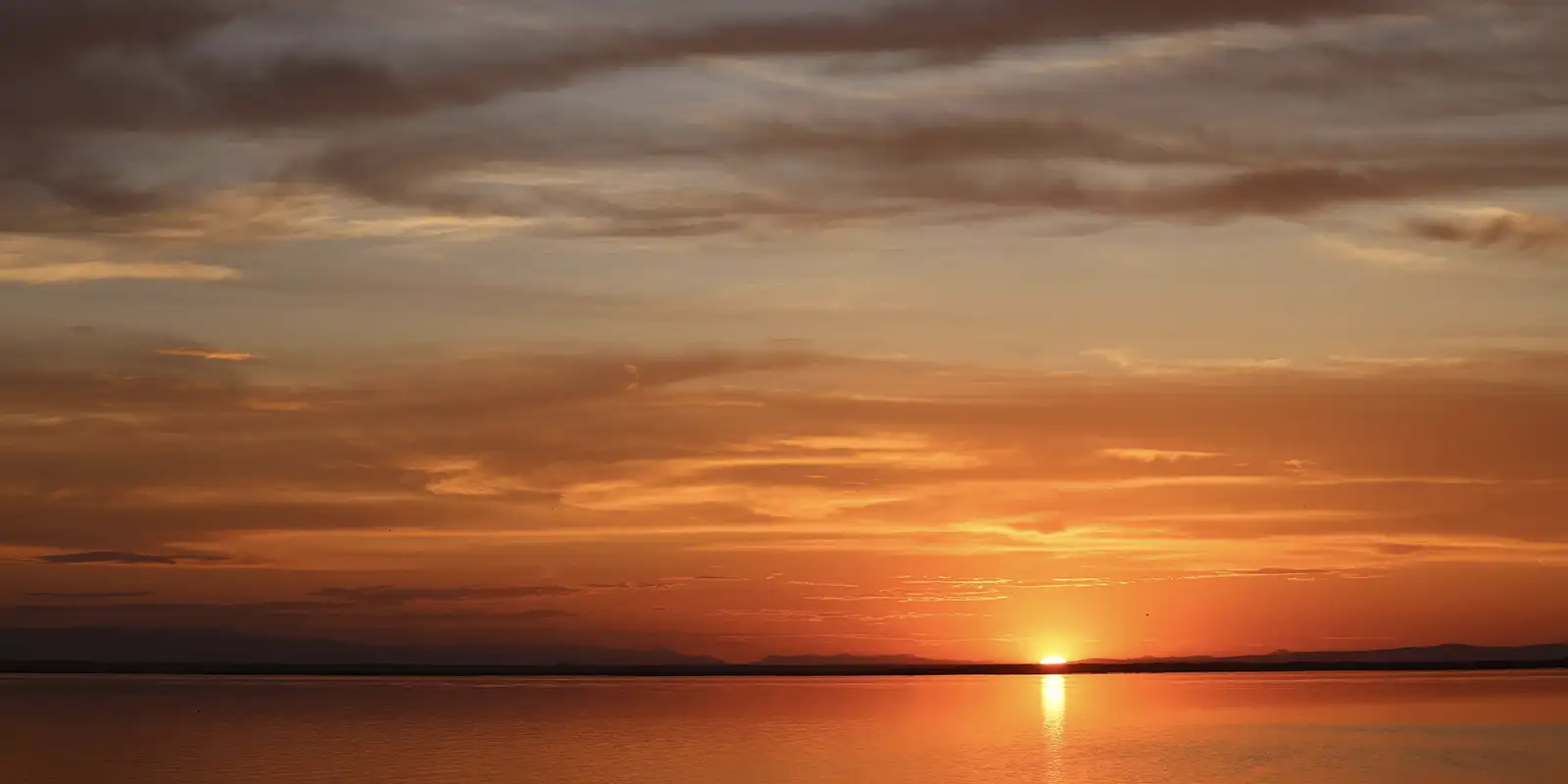Nestled in the heart of central Washington, Moses Lake is a vibrant town where natural beauty and modern living intertwine on the banks of Moses Lake. As a recreational paradise and thriving community, it offers a harmonious blend of scenic landscapes, cultural charm, and economic vitality.
The sprawling Moses Lake, which winds gracefully along its western edge, embraces the town of Moses Lake with its gentle curves. A nearly four-mile-long peninsula of the town juts into the lake, ending at the golden sand dunes between Parker and Pelican Horns, which are bays that create the peninsula.
The sand dunes have become a favorite playground for adventurers and nature lovers. The lake’s shimmering waters, framed by rolling dunes, mud flats, and tranquil wetlands, put forth a picturesque backdrop for endless outdoor activities.
Interstate 90 carves through the southern edge of Moses Lake, bridging the lake and connecting the town to travelers journeying between Seattle and Spokane. This strategic location makes Moses Lake more than a convenient pit stop; it’s a destination in its own right.
Visitors can explore the town’s many attractions, from its bustling commercial hubs to its peaceful parks and trails and discover something new at every turn.
What Is Moses Lake, WA, Known For?
Moses Lake is situated in the fertile Columbia Basin, a region made productive by an extensive irrigation system stemming from the Columbia River. Moses Lake itself provides easy access to the Columbia Basin Wildlife Refuge, sand dunes, and other outdoor destinations. The lake features trails and scenic parks like Blue Heron Park and the Japanese Peace Garden, offering serene spots for relaxation and family activities.
Moses Lake, one of the largest natural freshwater lakes in Washington, is a popular destination for outdoor activities like fishing, boating, waterskiing, paddleboarding, and swimming. The lake and its surrounding wetlands attract migratory birds, making it a haven for birdwatchers and nature enthusiasts.
Why Do They Call it Moses Lake?
Moses Lake, Washington, takes its name from Chief Moses, a prominent leader of the Sinkiuse-Columbia people, a Native American tribe that historically inhabited the Columbia Basin region. Chief Moses played a significant role in the history of the area during the 1800s, with his negotiations with the U.S. government as settlers moved into the region.
The territory of his tribe extended approximately from Waterville to White Bluffs, in the Columbia Basin. The Columbia Basin is a vast geographical region in central Washington state, spanning roughly 50,000 square miles, including small parts of Oregon and Idaho. It is defined by the Columbia River and its tributaries, which have shaped its region’s landscape, ecology, and human history.
Is Moses Lake A Man-Made Lake?
No, Moses Lake in Washington is not man-made. The Moses Lake Irrigation and Rehabilitation District (MLIRD) dammed Moses Lake to create a reservoir for irrigation in 1929. The MLIRD was established to manage water resources in the area. It spearheaded efforts to stabilize water levels, prevent flooding, and support agricultural development in the Columbia Basin.
Is Moses Lake a Clean Lake?
Moses Lake has experienced varying water quality over the years, with ongoing efforts to address challenges and improve conditions. Historical challenges include excessive phosphorus in the lake, primarily from agricultural runoff, septic systems, and the release of lake sediments that hold phosphorus.
Phosphorus has been a significant contributor to water quality issues and facilitates algal blooms. The MLIRD began implementing a dilution strategy in 1977 by introducing low-phosphorus water from the Columbia River into Moses Lake. This approach has significantly reduced phosphorus concentrations in the lake.
Can You Eat Fish from Moses Lake?
Yes, you can eat fish from Moses Lake, Washington, but it’s important to follow specific consumption guidelines to minimize exposure to potential contaminants, particularly mercury. The Washington State Department of Health (WSDH) has issued statewide advisories for certain fish species in the Columbian Basin because of mercury contamination.
By following the WSDH guidelines, you can enjoy the benefits of eating fish from Moses Lake while minimizing potential health risks associated with environmental contaminants:
- Northern Pikeminnow: It is advised that women who are or may become pregnant, nursing mothers, and young children do not eat northern pikeminnow from any water body in Washington State.
- Largemouth and Smallmouth Bass: For the same sensitive groups, it is recommended to limit consumption to 2 meals per month.
- While there are no specific advisories for Moses Lake beyond the statewide guidelines, it’s prudent to apply these recommendations when consuming fish from the lake.
Is There a Military Base in Moses Lake, Washington?
Moses Lake, Washington, is not home to an active military base, but it does have a significant military history tied to the former Larson Air Force Base. While the base is no longer operational, its legacy remains an integral part of the area.
The Decommissioned Larson Air Force Base
The Larson Air Force Base was established during World War II as the Moses Lake Army Air Base in 1942. It initially served as a training facility for bomber crews and later became a strategic airbase during the early years of the Cold War.
It was renamed Larson Air Force Base in 1948 in honor of Major Donald A. Larson, a local World War II fighter pilot who was killed in action.
The base was decommissioned in 1966 and moved its operations elsewhere. After its closure, the powers that be repurpose much of the base’s infrastructure. The base’s former airfield is now one of the largest airports in the U.S. and serves as a hub for aviation testing, training, and commercial flights.
Portions of the former base are used for industrial and commercial purposes, including manufacturing and aviation-related businesses. Some of the former base housing and facilities have been integrated into the local community in the form of education and housing.
Although there is no active military base, the region occasionally hosts military training exercises and aviation-related activities at the airport, reflecting its historical roots in military aviation.







